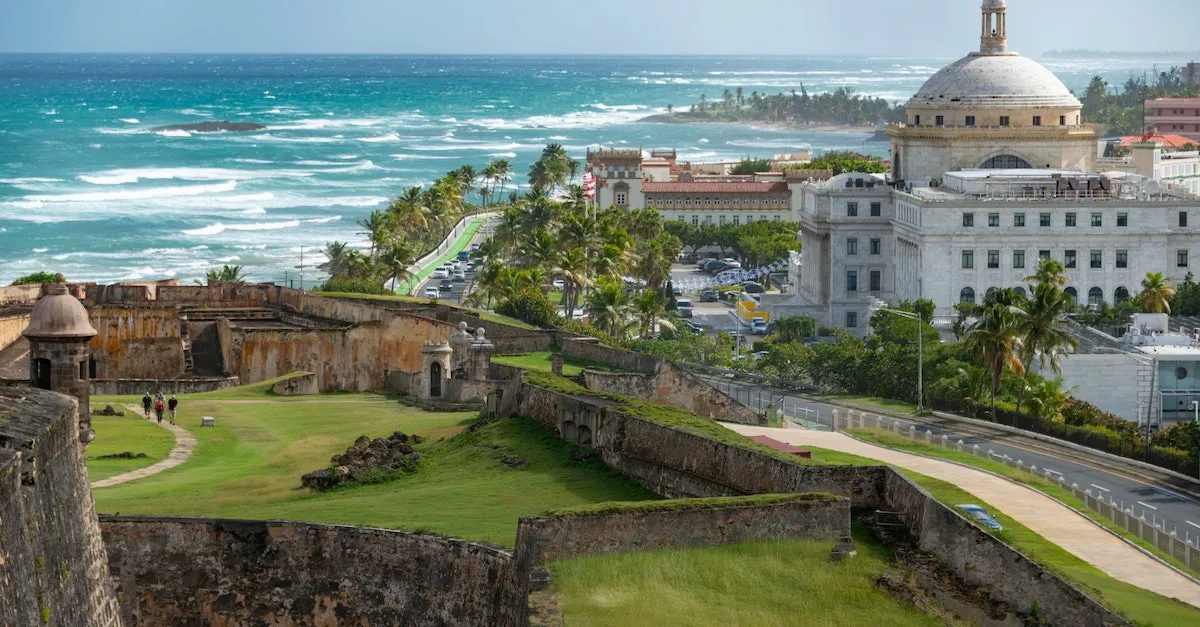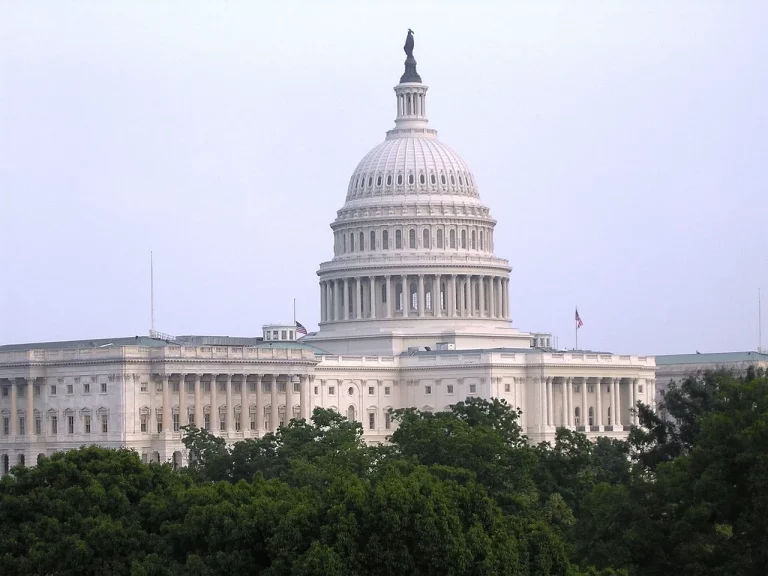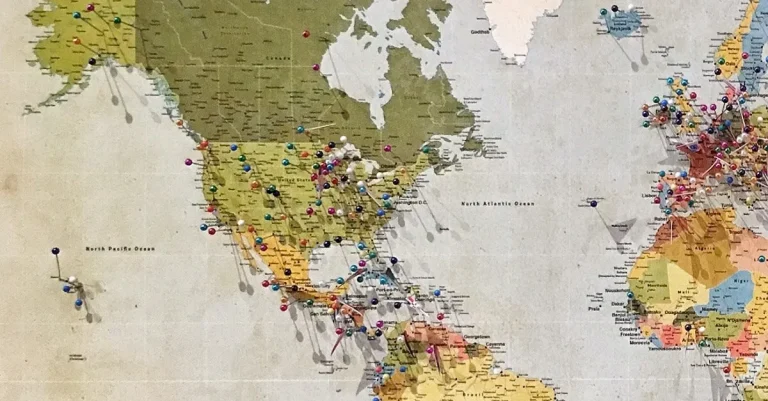How Big Is Puerto Rico Compared To Texas?
With Puerto Rico being an island and Texas being an enormous state, you may be wondering exactly how the sizes of the two places compare.
If you’re short on time, here’s a quick answer to your question: Puerto Rico is much smaller than Texas. The island of Puerto Rico is only about 3,500 square miles, while Texas is over 268,000 square miles – making Texas over 75 times larger than Puerto Rico in terms of land area.
Basic Facts About the Sizes of Puerto Rico and Texas
Land Area and Population of Puerto Rico
Puerto Rico, an unincorporated territory of the United States, is an archipelago located in the northeastern Caribbean Sea. It has a land area of approximately 3,515 square miles (9,104 square kilometers).
The population of Puerto Rico is around 3.2 million people, making it the 32nd most populous island in the world.
Land Area and Population of Texas
Texas, on the other hand, is the second-largest state in the United States, both in terms of land area and population. With an area of about 268,596 square miles (696,241 square kilometers), it is larger than many countries.
Texas is home to over 29 million people, making it the second most populous state in the U.S. after California.
Quick Comparison of Sizes
To put the sizes of Puerto Rico and Texas into perspective, let’s compare them side by side:
| Puerto Rico | Texas | |
|---|---|---|
| Land Area | 3,515 square miles | 268,596 square miles |
| Population | 3.2 million | over 29 million |
As you can see, Texas is significantly larger in land area compared to Puerto Rico. In fact, it is approximately 76 times bigger! Similarly, Texas has a much larger population compared to Puerto Rico.
It’s important to note that Puerto Rico and Texas have their own unique characteristics and attractions. Puerto Rico is known for its beautiful beaches, rich history, and vibrant culture. Texas, on the other hand, is famous for its vast landscapes, cowboy culture, and thriving cities like Houston and Austin.
For more information about Puerto Rico, you can visit the official website of the Puerto Rico Tourism Company at https://www.discoverpuertorico.com/. To learn more about Texas, you can visit the official website of the Texas Tourism at https://www.traveltexas.com/.
Interesting Ways to Visualize the Size Difference
Fitting Puerto Rico into Texas
When it comes to comparing the size of Puerto Rico and Texas, it’s important to note that Puerto Rico is significantly smaller than the Lone Star State. In fact, Puerto Rico is approximately 8,870 square kilometers in size, while Texas spans a vast 696,241 square kilometers.
To put it into perspective, you could fit more than 78 Puerto Ricos within the borders of Texas!
Visualizing this size difference can be quite mind-boggling. Imagine standing in Puerto Rico, where you can easily traverse the entire island in just a few hours. Now, picture yourself in Texas, where it would take you days to drive from one end to the other.
It’s like comparing a small neighborhood to an entire country!
Comparing Major Cities in Each Place
To further understand the size difference between Puerto Rico and Texas, let’s take a closer look at the major cities in each location.
| Puerto Rico | Texas |
|---|---|
| San Juan | Houston |
| Ponce | San Antonio |
| Mayagüez | Dallas |
While San Juan, the capital city of Puerto Rico, is bustling with a population of over 2 million people, it pales in comparison to Houston, which is home to more than 2.3 million residents. Similarly, Ponce and Mayagüez, two other major cities in Puerto Rico, are significantly smaller than their counterparts in Texas.
These comparisons highlight the vast difference in size between Puerto Rico and Texas, both in terms of land area and population. It’s truly awe-inspiring to see just how much larger Texas is in comparison!
For more information on the size and geography of Puerto Rico and Texas, you can visit the official websites of the Government of Puerto Rico and the State of Texas.
Historical Context for the Different Sizes
How Puerto Rico Became a Territory
To understand the size difference between Puerto Rico and Texas, it is important to delve into the historical context of how Puerto Rico became a territory. Puerto Rico was originally inhabited by the Taíno people before Christopher Columbus arrived in 1493.
It then became a Spanish colony and remained under Spanish control until the Spanish-American War in 1898. As a result of the war, Puerto Rico was ceded to the United States under the Treaty of Paris.
Since then, Puerto Rico has been an unincorporated territory of the United States. This means that while Puerto Ricans are U.S. citizens, they do not have the same rights and representation as residents of the 50 states.
The relationship between Puerto Rico and the United States has had a significant impact on the island’s development and size in comparison to Texas.
The Formation of the Giant State of Texas
In contrast, Texas has a unique history as it was once an independent country before joining the United States. After gaining independence from Mexico in 1836, Texas existed as the Republic of Texas for nearly a decade. It then joined the United States as the 28th state in 1845.
The size of Texas was determined during the process of becoming a state. At the time of annexation, Texas claimed a vast territory that included parts of present-day New Mexico, Oklahoma, Kansas, Colorado, and Wyoming.
However, through various negotiations and agreements, these territories were eventually ceded to other states, resulting in the current borders of Texas.
Today, Texas is the second-largest state in the United States, covering approximately 268,597 square miles. In comparison, Puerto Rico covers an area of about 3,515 square miles, making it significantly smaller than Texas.
For a visual comparison, consider this: if Texas were superimposed over Puerto Rico, it would cover a large portion of the island. The size difference between Puerto Rico and Texas is truly remarkable and highlights the vastness of the United States compared to its territories.
If you’d like to learn more about the history of Puerto Rico and Texas, you can visit history.com and history.com for more in-depth information.
Other Interesting Facts About Puerto Rico and Texas
Climate Differences Between the Two
Puerto Rico and Texas have vastly different climates due to their geographical locations. Puerto Rico, located in the Caribbean, enjoys a tropical climate with warm temperatures year-round. The average temperature in Puerto Rico ranges from 75°F (24°C) in the winter to 85°F (29°C) in the summer.
The island is also prone to hurricanes and receives a significant amount of rainfall throughout the year.
On the other hand, Texas experiences a more diverse climate. The state is known for its hot summers, with temperatures often exceeding 100°F (38°C) in some areas. However, Texas also experiences colder winters, especially in the northern parts of the state, where freezing temperatures and even snowfall are not uncommon.
These climate differences have a significant impact on the vegetation and natural landscapes of Puerto Rico and Texas. Puerto Rico is home to lush rainforests, while Texas boasts vast plains, deserts, and forests.
Cultural Influences and Diversity
Both Puerto Rico and Texas have rich cultural influences and a diverse population.
Puerto Rico is a territory of the United States but has a distinct culture that is heavily influenced by its Spanish and African roots. The island’s unique blend of traditions, music, and cuisine reflects its multicultural heritage.
Puerto Ricans are known for their vibrant festivals, such as the annual San Sebastián Street Festival and the colorful Vejigante masks.
Texas, on the other hand, has a rich history influenced by its Native American, Mexican, and European roots. The state’s cultural diversity is evident in its cuisine, music, and traditions. Tex-Mex cuisine, which blends Mexican and American flavors, is popular throughout the state.
Texas is also famous for its traditional country music and the iconic cowboy culture.
Conclusion
While Puerto Rico may seem tiny compared to the massive state of Texas, it is still a place rich in history, culture, and natural beauty. Understanding the origins of how both places came to be their current sizes also gives some helpful perspective. Whether you’re from Puerto Rico, Texas, or anywhere else, appreciating the diversity of places in the United States and around the world makes us all better global citizens.








